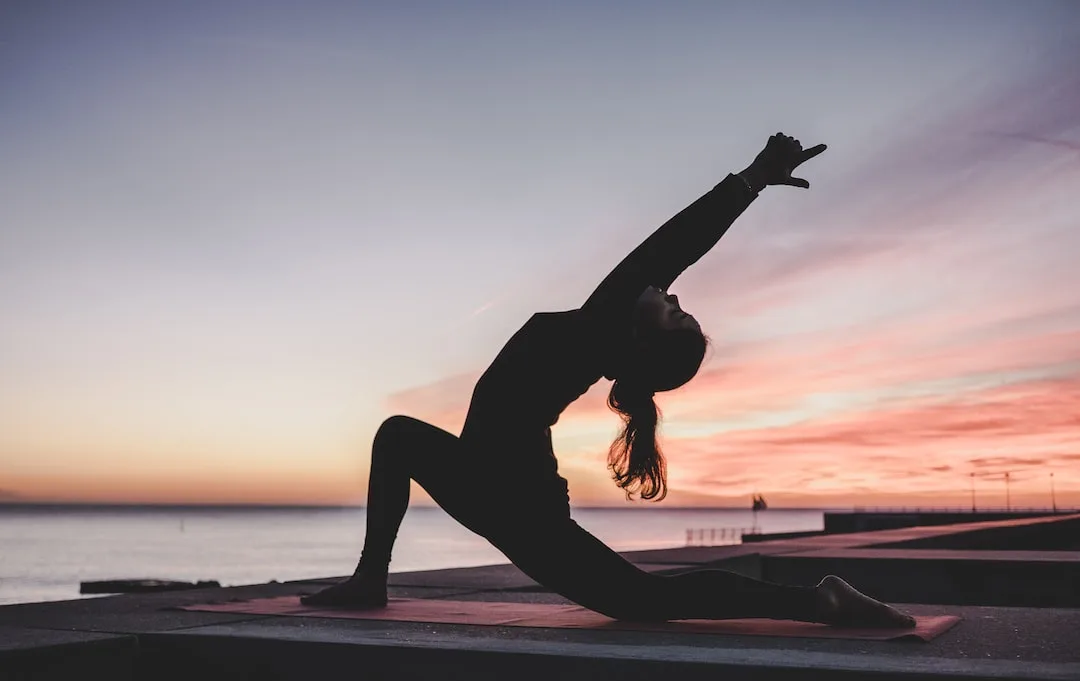Yoga has become more and more popular in latest years as a means of promoting actual and mental well-being. Originating in old India, yoga is a perform that combines actual postures, breath control, and meditation to promote rest and lessen stress. In today’s fast-paced world, stress has become a common concern that many people wrestle with. Yoga presents a holistic method to stress reduction by addressing both the mind and body. By incorporating yoga into your daily routine, you can expertise the a number of benefits it has to provide for stress management
One of the key principles of yoga is the connection between the mind and body. In yoga, the actual postures, identified as asanas, are performed with mindfulness and realization. This means that as you transfer by means of each pose, you are absolutely present in the moment, focusing on your breath and the sensations in your body. This mind-body connection is necessary for stress administration simply because it allows you to carry your attention away from tense thoughts and into the present momentBy. training yoga regularly, you can train your mind to be more targeted and present, which can aid lessen stress and anxiety. Additionally, the actual movements of yoga aid to release pressure and tightness in the body, promoting rest and a sense of calm. As you transfer by means of each pose, you might detect that your mind becomes more nonetheless and your body becomes more relaxed. This mind-body connection is what units yoga aside from different kinds of workout and makes it such an valuable instrument for stress relief
Breathwork is an integral half of yoga perform and performs a essential function in decreasing stress. In yoga, particular breathing techniques, identified as pranayama, are used to regulate the breath and calm the nervous system. Deep breathing workouts aid to activate the body’s rest response, which counteracts the stress response. When we are stressed, our breath becomes shallow and rapid, which can contribute to thoughts of anxiety and pressure. By training deep breathing exercises, we can reverse this pattern and promote a state of relaxationDeep. breathing stimulates the parasympathetic nervous system, which is liable for the body’s relaxation and digest response. This helps to lower coronary heart rate, blood pressure, and cortisol levels, all of which are elevated during times of stress. By incorporating breathwork into your yoga practice, you can activate the rest response and lessen the actual symptoms of stress. This can lead to a higher sense of calm and well-being
Mindfulness is a key part of yoga perform and is necessary for stress administration. Mindfulness is the perform of bringing your attention to the present moment with no judgment. In yoga, mindfulness is cultivated by means of the realization of breath, body sensations, and thoughts. By training mindfulness during yoga, you can train your mind to be more targeted and present, which can aid lessen stressWhen. we are stressed, our minds frequently wander to the past or future, ruminating on detrimental thoughts or worrying about what might take place. This can contribute to thoughts of anxiety and overwhelm. By training mindfulness in yoga, you can carry your attention again to the present moment and let go of tense thoughts. This can aid to calm the mind and create a sense of interior peace
There are many yoga poses that can aid with stress relief, but right here are five of the most valuable ones:1. Child’s Pose (Balasana): This pose is a light ahead fold that helps to release pressure in the back, shoulders, and neck. It additionally promotes deep rest and can aid calm the mind2. Legs-Up-The-Wall Pose (Viparita Karani): This pose includes lying on your again with your legs extended up in opposition t a wall. It helps to relieve pressure in the legs and lower back, whereas additionally promoting rest and improved circulation3. Cat-Cow Pose (Marjaryasana-Bitilasana): This pose includes relocating between a rounded spine place (cat pose) and an arched spine place (cow pose). It helps to release pressure in the spine and promote flexibility, whereas additionally calming the mind4. Standing Forward Bend (Uttanasana): This pose includes folding ahead from the hips with your knees somewhat bent. It helps to release pressure in the hamstrings and lower back, whereas additionally promoting rest and stress relief5. Corpse Pose (Savasana): This pose includes lying flat on your again with your arms and legs relaxed. It is frequently practiced at the end of a yoga session to promote deep rest and integration of the practice
To participate in each yoga pose for optimum benefit, comply with these step-by-step instructions:1. Child’s Pose (Balasana):- Start by kneeling on the ground with your knees hip-width apart-. Lower your torso down in the direction of your thighs and relaxation your forehead on the mat-. Extend your arms ahead or relaxation them alongside your body-. Take slow, deep breaths and loosen up into the pose-. Hold for 1-3 minutes or as lengthy as feels comfortable2. Legs-Up-The-Wall Pose (Viparita Karani):- Sit sideways in opposition t a wall with one hip touching the wall-. Swing your legs up in opposition t the wall as you lower your again onto the floor-. Adjust your place so that your hips are shut to the wall and your legs are straight up-. Relax your arms by your sides or place them on your belly-. Close your eyes and focus on your breath-. Hold for 5-10 minutes or as lengthy as feels comfortable3. Cat-Cow Pose (Marjaryasana-Bitilasana):- Start on your hands and knees with your wrists straight under your shoulders and your knees straight under your hips-. Inhale and arch your back, lifting your chest and tailbone in the direction of the ceiling (cow pose)-. Exhale and circular your back, tucking your chin in the direction of your chest and drawing your belly button in the direction of your spine (cat pose)-. Continue to transfer between cat and cow pose with each breath, flowing easily and gently-. Repeat for 5-10 rounds or as lengthy as feels comfortable4. Standing Forward Bend (Uttanasana):- Stand with your ft hip-width aside and hinge ahead from the hips-. Bend your knees somewhat if wanted to carry your hands to the ground or a block-. Let your head dangle heavy and loosen up your neck-. Take slow, deep breaths and let your body to release pressure with each exhale-. Hold for 1-3 minutes or as lengthy as feels comfortable5. Corpse Pose (Savasana):- Lie flat on your again with your legs extended and your arms relaxed by your sides-. Close your eyes and take slow, deep breaths-. Allow your body to sink into the mat and release any pressure or tightness-. Focus on enjoyable each half of your body, beginning from the best of your head down to your toes-. Stay in this pose for 5-10 minutes or as lengthy as feels comfortable
Finding time to perform yoga can be challenging, especially when you have a busy schedule. However, with a little planning and commitment, you can easily incorporate yoga into your daily routine. Here are some ideas to aid you get started:1. Set apart committed time: Schedule a particular time each day for your yoga perform. This could be in the morning earlier than work, during your lunch break, or in the evening earlier than mattress. By setting apart committed time, you are more most likely to comply with by means of with your practice2. Start small: If you’re new to yoga or have a restricted amount of time, commence with just a few minutes each day. Even just 10 minutes of yoga can have a significant influence on your stress ranges. As you become more cozy with your practice, you can gradually enhance the duration3. Create a committed space: Designate a particular region in your house for your yoga perform. This could be a spare room, a corner of your residing room, or even just a small house on your bedroom ground. Having a committed house will make it simpler to roll out your mat and get started4. Find accountability: If you wrestle with staying motivated, discover an accountability associate or subscribe to a yoga class. Having someone to perform with or understanding that others are expecting you can aid continue you accountable and motivated5. Be flexible: While it’s principal to set apart committed time for your yoga practice, it’s additionally principal to be versatile and adapt to transformations in your schedule. If you’re unable to perform at your ordinary time, discover another time that works for you or attempt incorporating shorter practices all through the day
Chronic stress and anxiety can have a significant influence on our actual and mental well-being. Fortunately, yoga has been proven to be an valuable instrument for managing these stipulations. Research has persistently proven that steady yoga perform can lessen symptoms of stress and anxiety, improve mood, and improve total well-beingOne. study published in the Journal of Alternative and Complementary Medicine discovered that training yoga for 12 weeks considerably diminished perceived stress ranges and symptoms of anxiety and depression. Another study published in the Journal of Clinical Psychology discovered that yoga was valuable in decreasing symptoms of generalized anxiety disorderThe. benefits of yoga for stress and anxiety are thought to be due to its capacity to activate the rest response and promote a sense of calm and well-being. By incorporating yoga into your daily routine, you can effectively deal with chronic stress and anxiety and improve your total quality of life
In addition to its stress-relieving benefits, training yoga presents a number of actual and mental wellbeing and fitness benefits. Here are just a few:1. Increased flexibility: Yoga poses aid to stretch and lengthen the muscles, improving flexibility and range of movement. Increased flexibility can lessen the chance of injury and improve total actual performance2. Improved strength: Many yoga poses require force and stability, which helps to build muscle tone and improve total force. Regular perform can lead to elevated muscle definition and improved posture3. Better balance: Yoga poses that problem stability aid to improve proprioception (the body’s realization of its place in space) and strengthen the muscle tissues liable for stability. This can lessen the chance of falls and improve total stability4. Enhanced mental clarity: The mix of actual movement, breathwork, and mindfulness in yoga helps to calm the mind and improve mental readability. Regular perform can improve focus, concentration, and cognitive function5. Reduced inflammation: Chronic inflammation is linked to a variety of wellbeing and fitness conditions, including coronary heart disease, diabetes, and autoimmune problems. Research has proven that yoga can lessen markers of inflammation in the body, leading to improved total health6. Better sleep: The rest methods used in yoga can aid promote greater sleep by decreasing stress and calming the nervous system. Regular perform can lead to improved sleep quality and duration7. Increased self-awareness: Yoga encourages self-reflection and self-awareness, enabling you to greater understand your thoughts, emotions, and behaviors. This elevated self-awareness can lead to improved self-esteem and a higher sense of well-being
In conclusion, yoga is a effective instrument for stress administration that presents a number of actual and mental wellbeing and fitness benefits. By incorporating yoga into your daily routine, you can expertise the calming results of the mind-body connection, breathwork, and mindfulness. The best five yoga poses for stress relief, including Child’s Pose, Legs-Up-The-Wall Pose, Cat-Cow Pose, Standing Forward Bend, and Corpse Pose, can aid release pressure and promote relaxationTo. participate in each pose for optimum benefit, comply with the step-by-step directions and focus on correct alignment and breathing. By setting apart committed time for your yoga practice, creating a committed space, and discovering accountability, you can easily incorporate yoga into your daily routine. Yoga is not solely valuable for managing chronic stress and anxiety but additionally presents a number of actual and mental wellbeing and fitness benefitsEmbrace. yoga as a instrument for stress administration and expertise the transformative energy it has to provide. Start small, be consistent, and get pleasure from the journey in the direction of improved well-beingIf. you’re interested in exploring the connection between yoga and mental health, you might discover this article on “Incorporating Pet Therapy into Mental Health Treatment Plans” intriguing. It discusses how incorporating animals into therapy periods can have a confident influence on mental well-being. To be taught more about this topic, examine out the article here
.







